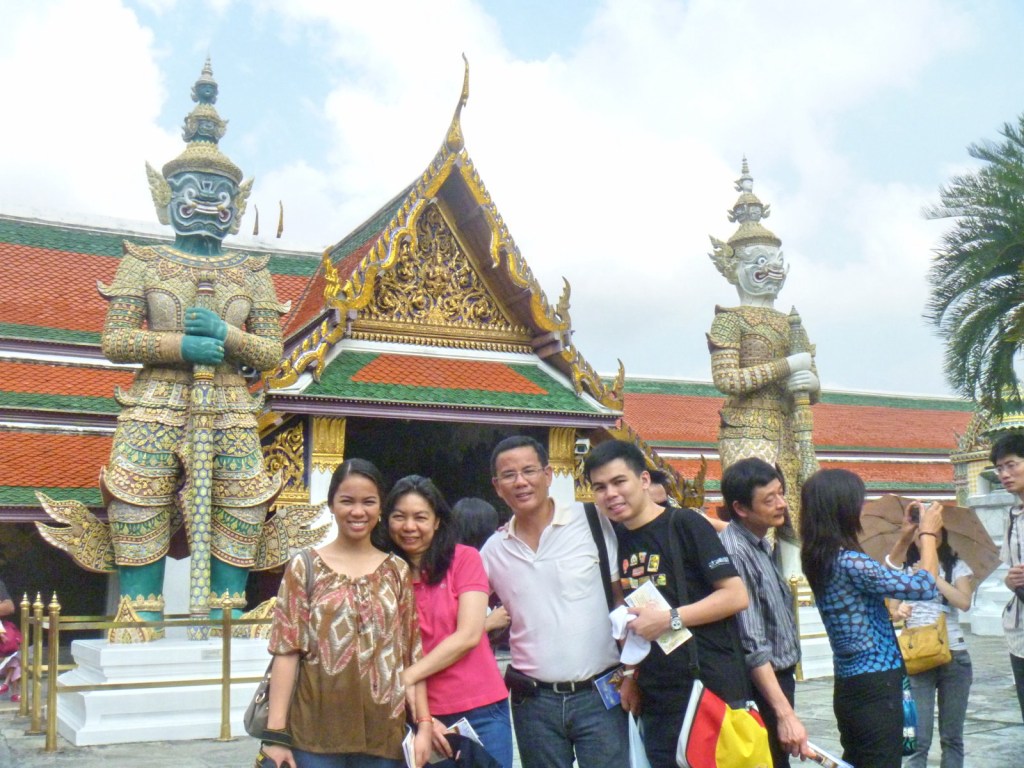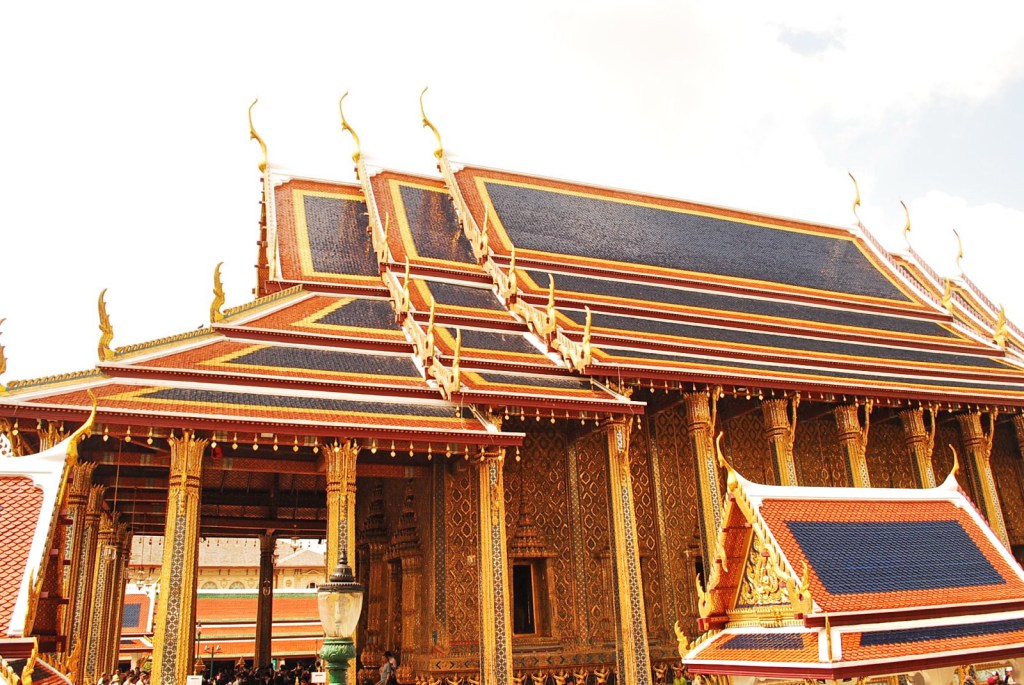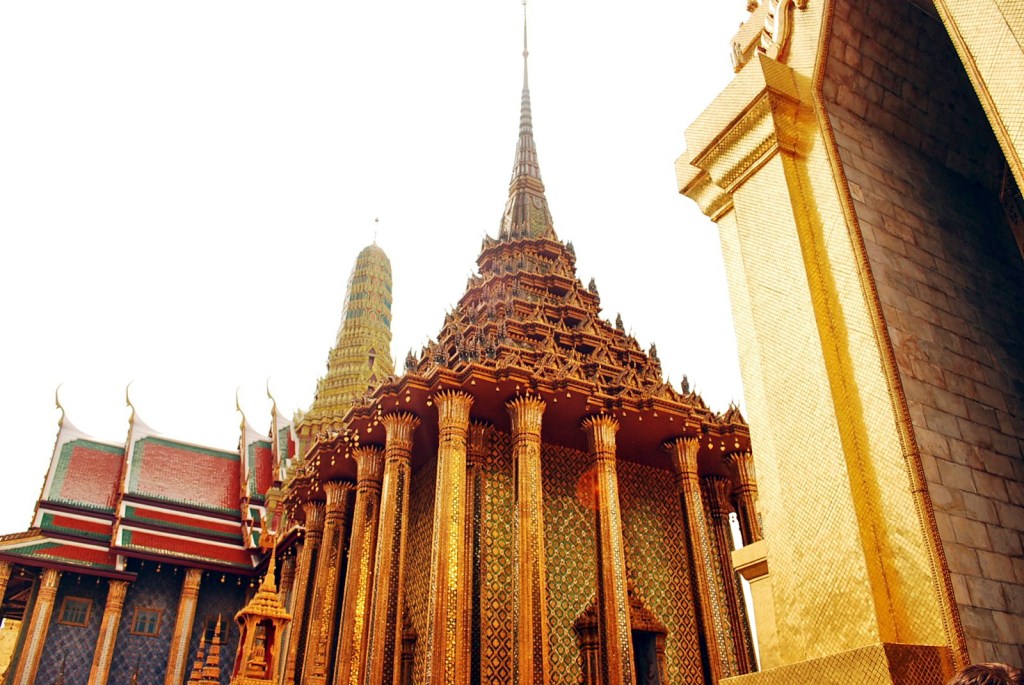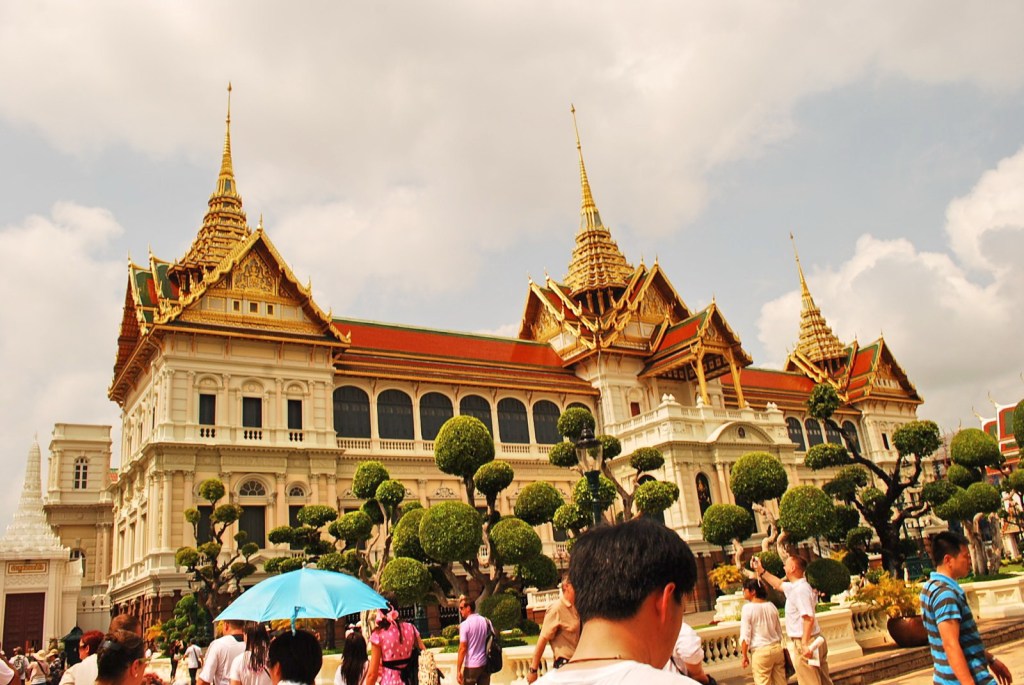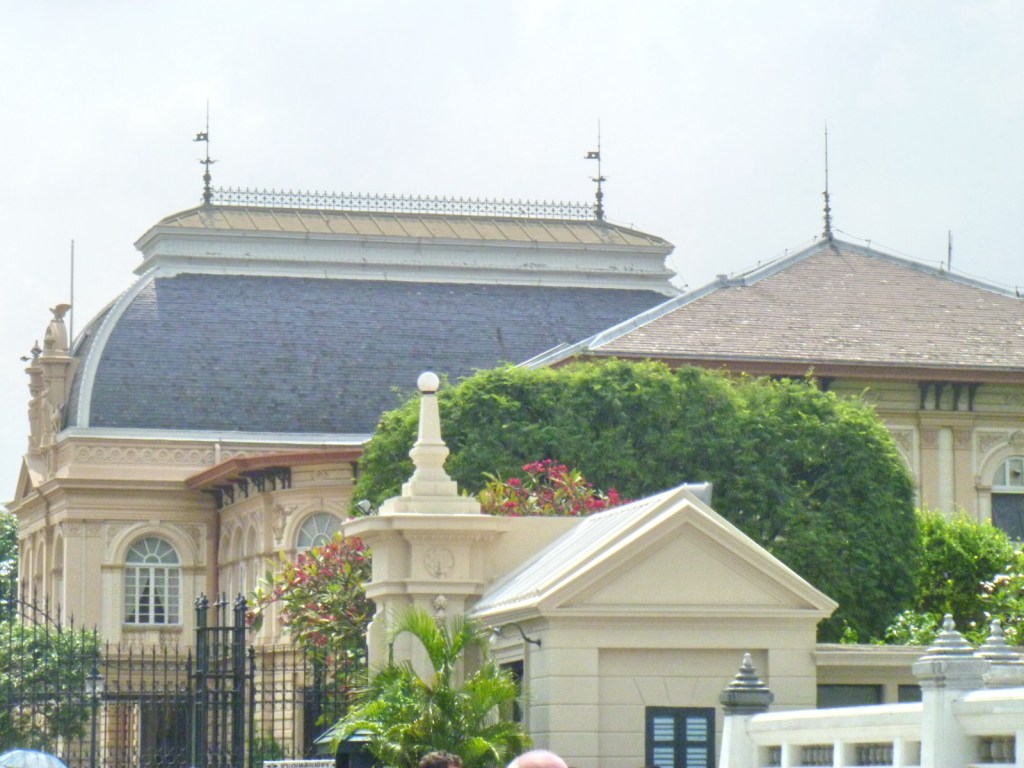On our third day in Bangkok, we availed of a tour from the travel agency at the hotel, of the fabulous Grand Palace (Phra Borom Maha Ratcha Wang), the gem of Bangkok’s impressive collection of temples and palaces, and its adjoining Wat Phra Kaew (Chapel Royal of the Emerald Buddha), Thailand’s most important temple. This would the first for Jandy and Cheska. After breakfast at the hotel, we were picked up at the hotel lobby by a good English-speaking guide (he seemed to be of Indian ancestry) and driven to the palace in a sedan.
We arrived at the palace just when a troop of marching soldiers, dressed in colorful ceremonial uniforms, were entering the gate along Na Phra Lan Road, on the north side, to the palace’s Outer Court and we followed at their heels. The weather was sunny but extremely hot. Whether you take a guided tour or not, the route through the complex is more or less fixed, with the Wat Phra Kaeo first and the Grand Palace last.
Nowadays, the Grand Palace, the official residence of the king of Thailand from the 18th century to the mid-20th century, is used only for occasional ceremonial purposes and is no longer the royal residence as King Bhumibol (Rama IX) lives in Chitralada Palace (closed to tourists) which is located not too far away in Bangkok’s Dusit district, near Dusit Zoo. However, the interiors of most of the buildings in the Grand Palace remain closed to the public.
Sitting on the eastern bank of the Chao Phraya River, this complex of of shrines, temples, royal halls and apartment buildings, despite their proximity, have a distinct contrast in style, the Grand Palace being European-inspired in architecture (the roof being the exception) and the Wat Phra Kaew very Thai. It covers 218,400 sq.m. and is surrounded by a 1,900 m. long wall.
The 94.5-hectare (234-acre) Wat Phra Kaeo, built in 1782 during the reign of King Rama I, has a roof embellished with polished orange and green tiles, pillars inlaid in mosaic and pediments made of rich marble. The temple houses the small (45 cm. tall), beautiful, gold-clothed and greatly revered Emerald Buddha, carved from a block of fine green jade (instead of emerald) sitting on a high throne under a golden filigree canopy. As in all Thai temples, we were required to remove our shoes or sandals before entering. Bare feet are not allowed either. We also weren’t allowed to take pictures inside.
In the middle of the complex is the Phra Mondop, a library built in Thai style by Rama I. It houses elegantly carved, Ayutthaya-style mother-of-pearl doors, bookcases with the tripitaka (sacred Buddhist manuscripts), human-and dragon-headed nagas (snakes), and images of Chakri kings.
Enclosing this temple complex are galleries with typically Thai murals that feature lovely paintings depicting 178 unbelievably vivid and detailed scenes from the Indian epic Ramayama (Ramakien in Thai) that show the heroic tale of Rama of Ayodhya and his war against the giant Ravana, king of Lonka.
The Upper Terrace has 4 main monuments: the Phra Sri Rattana Chedi, the Repository of the Canon of Buddhism, the Prasart Phra Dedidorn (the model of Cambodia’s Angkor Wat presented to King Mongkut) and the Prasat Phra Thep Bidon. The Phra Sri Ratana Chedi, located west of Wat Phra Kaeo, is a 19th century stupa built in Sri Lankan style. It enshrines the ashes of the Buddha.
The Prasat Phra Thep Bidon (Royal Pantheon), crowned with a high filigree prang, contains the relics of the previous kings of the Chakri Dynasty. It has lovely kinnara (half man, half bird) statues up front.
The Grand Palace has two groups of residences: the Chakri Maha Prasat Hall and the Phra Maha Monthian. The Italian Renaissance-influenced Chakri Maha Prasat Hall, built in 1882 by King Chulalongkorn (Rama V), is a remarkable mixture of European and traditional Thai styles. Each wing has a shrine (mandap) crowned by a spire and has 3 prangs instead of domes. This palace houses elegant staterooms and an exhibition of the royal weapons collection at the ground floor.
The Phra Maha Monthian consists of the Amarin Winitchai Audience Hall and the Paisal Taksin Hall which features the monarchy’s coronation chair. The Amarin Winitchai Audience Hall was where court ceremonies took place before the throne. It has a very interesting 4-tiered roof and a very pretty pavilion in front of it (Amporn Phimok Prasad).
At the eastern end is the Borombhiman Hall, built in the French architectural style. Formerly the residence of King Rama VI, it is now used as guest house for visiting foreign dignitaries.
Grand Palace and Wat Phra Kaew: Open daily, 8:30 AM-4:30 PM.
How to Get There: take bus 44, 47 and 91 and drop off at Thaiwang Road, between Wat Pho and Wat Phra Kaew. You can also take bus 1, 25, 44, 47, 82 and 91 and drop off at Maharat Road, west of Wat Phra Kaew. North of Wat Phra Kaew, on nearby Sanam Luang, you can also take bus 3, 15, 30, 32, 43, 44, 59, 64, 70, 80, 123 and 201 as well as airconditioned bus 6, 7, 12, 39 and 44. The Tha Chang river express boat stop is also very near.



